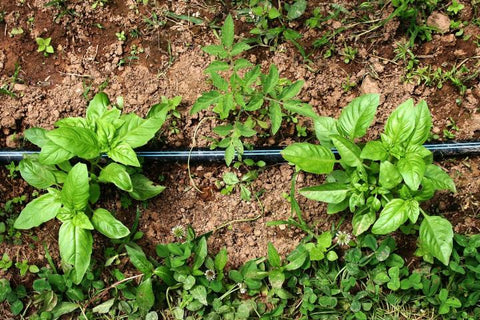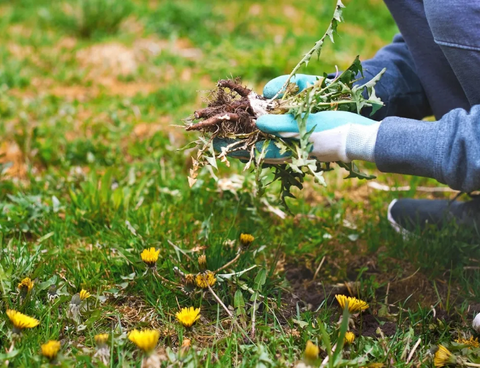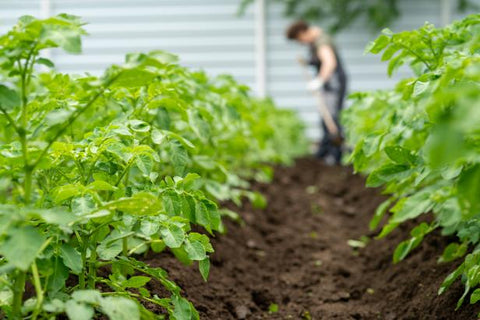Weed control is a crucial aspect of maintaining a healthy and thriving home garden. Left unchecked, weeds can compete with desirable plants for resources, leading to stunted growth and reduced yields. In this article, we'll explore various strategies and techniques for effective weed management to help you keep your garden flourishing.

Understanding Weeds
Definition and Types of Weeds
Weeds are commonly defined as plants growing where they are not wanted, often competing with cultivated plants for nutrients, water, and sunlight. They come in various forms, including broadleaf weeds like dandelions and narrowleaf weeds such as grasses.
Characteristics of Common Garden Weeds
Garden weeds exhibit traits that allow them to thrive in diverse environments. They often possess rapid growth rates, prolific seed production, and resilient root systems, making them formidable adversaries in the battle for garden dominance.
Importance of Weed Control
Negative Impacts of Weeds on Garden Health
Weeds can have detrimental effects on garden health, including the depletion of soil nutrients, harboring of pests and diseases, and shading out desirable plants. Left uncontrolled, weeds can quickly overrun a garden, diminishing its aesthetic appeal and productivity.
Economic Implications of Weed Infestations
Weed infestations can result in significant economic losses for gardeners, including decreased crop yields, increased labor costs for weed management, and potential damage to garden infrastructure. Implementing effective weed control measures is essential for maximizing the economic viability of home gardening.
Cultural Weed Control Methods
Mulching
Mulching involves covering the soil surface with organic or synthetic materials to suppress weed growth, conserve soil moisture, and regulate soil temperature. Organic mulches like straw and wood chips also decompose over time, enriching the soil with nutrients.
Hand Weeding
Hand weeding entails manually removing weeds by hand or using handheld tools like trowels and weeders. While labor-intensive, this method allows for precise weed removal without disturbing surrounding plants.
Crop Rotation
Crop rotation involves alternating the types of crops grown in specific areas of the garden from season to season. This practice disrupts the life cycles of weeds and pests, reducing their populations and promoting soil health and fertility.
Mechanical Weed Control Techniques
Hoeing and Cultivating
Hoeing and cultivating involves using tools like hoes and cultivators to disturb the soil surface and uproot weeds. This method is effective for managing weeds in larger garden plots and vegetable rows.
Mowing or Cutting
Regular mowing or cutting of weeds can prevent seed formation and limit their spread. This technique is particularly useful for controlling weeds in lawns and open areas.
Weed Barriers

Weed barriers, such as landscape fabric or plastic mulches, create a physical barrier between the soil and sunlight, preventing weed germination and growth. These barriers are especially beneficial for perennial weed control in flower beds and vegetable gardens.
Biological Weed Control Solutions
Introduction to Biological Control Agents
Biological control involves the use of living organisms to suppress weed populations. This may include the introduction of herbivorous insects, pathogens, or grazing animals that feed on specific weed species.
Using Beneficial Insects for Weed Management
Certain insects, such as ladybugs and parasitic wasps, can serve as natural predators of weed pests. By promoting a diverse ecosystem in the garden, gardeners can encourage the presence of these beneficial insects to help keep weed populations in check.
Introducing Livestock for Weed Grazing
Livestock grazing, such as goats or sheep, can be employed as a sustainable method of weed control in larger garden or pasture areas. Grazing animals selectively consume weeds while fertilizing the soil with their manure, contributing to overall garden health.
Chemical Weed Control Options
Herbicides: Types and Application Methods
Herbicides are chemical substances designed to kill or inhibit the growth of weeds. They come in various formulations, including selective herbicides that target specific weed species and non-selective herbicides that control a broad spectrum of weeds.
Safety Precautions and Environmental Considerations
When using chemical herbicides, it's essential to follow safety precautions to protect human health and the environment. This includes wearing protective clothing, applying herbicides during optimal weather conditions, and avoiding overspray onto desirable plants.
Integrated Pest Management (IPM) Approach
Integrated Pest Management (IPM) combines multiple strategies, including cultural, mechanical, biological, and chemical methods, to effectively manage weed populations while minimizing environmental impacts. By integrating various control tactics, gardeners can achieve long-term weed management success.
Organic Weed Management Practices
Homemade Weed Killer Recipes
Homemade weed killers, using ingredients like vinegar, salt, and soap, offer natural alternatives to chemical herbicides. These DIY solutions can be effective for controlling weeds in areas where chemical use is restricted or undesirable.
Soil Health and Weed Suppression
Maintaining soil health through practices like composting, cover cropping, and proper nutrient management can help suppress weed growth by promoting strong, vigorous plant growth and competitive exclusion.
Organic Mulching Materials
Organic mulching materials, such as shredded leaves, straw, or grass clippings, not only suppress weed growth but also contribute to soil fertility and moisture retention. Choosing organic mulches ensures that no synthetic chemicals are introduced into the garden ecosystem.
Preventive Measures
Early Detection and Removal of Weeds
Regular monitoring of the garden for early signs of weed emergence allows for prompt removal before they have a chance to establish and spread. Vigilance is key to preventing weed infestations and minimizing their impact on garden health.
Proper Spacing and Planting Techniques
Optimizing plant spacing and arrangement can help maximize sunlight exposure, airflow, and soil nutrient availability while reducing opportunities for weed colonization. Dense planting and ground cover crops can also shade out weeds and inhibit their growth.
Regular Maintenance and Monitoring
Consistent garden maintenance, including weeding, watering, and fertilizing, is essential for keeping weeds in check and promoting overall garden vitality. By staying proactive and attentive to garden care, gardeners can prevent weed problems before they escalate.

Conclusion
Effective weed control is essential for maintaining a vibrant and productive home garden. By employing a combination of cultural, mechanical, biological, and chemical control methods, along with organic management practices and preventive measures, gardeners can effectively manage weeds while promoting the health and beauty of their gardens. Remember, a little effort invested in weed control goes a long way toward ensuring a bountiful harvest and a flourishing garden ecosystem.









